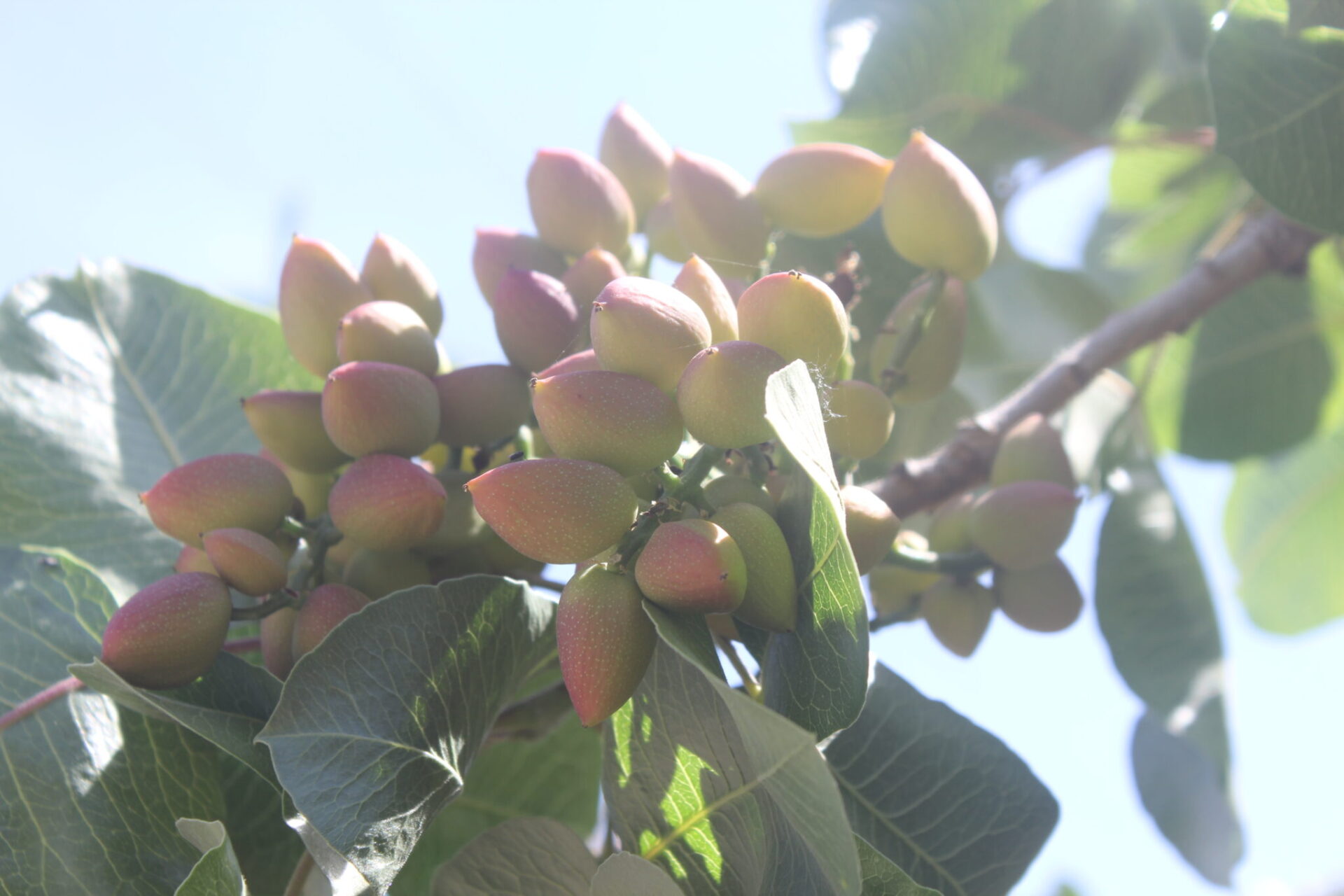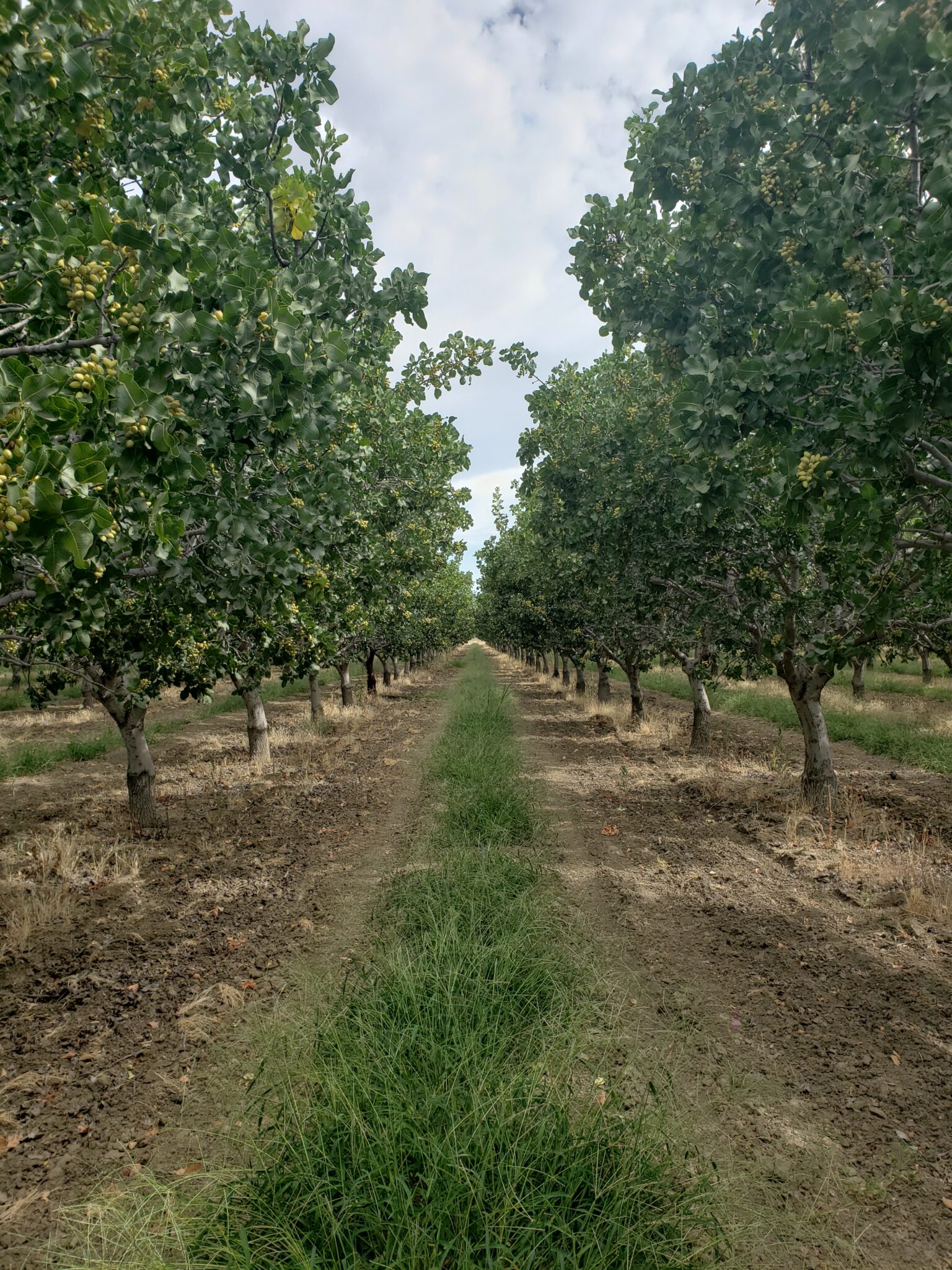
Pistachios are arguably the most profitable permanent crop currently being produced in California. Bob Klein, manager of the California Pistachio Research Board, reported in the opening session of the 2020 UCCE Pistachio Short Course that the number of acres being planted to pistachios does not appear to be slowing down and domestic and export markets remain strong.
“Pistachios can grow where some other crops cannot,” Klein said, noting their adaptability to a range of environmental conditions.
While there is no perfect site for pistachio production, UCCE orchard advisor Katherine Jarvis-Shean said most areas in the Central Valley are potential sites for planting pistachio trees.
“There are pluses and minuses in all areas, but management of many of these issues is possible,” Jarvis-Shean noted.
Jarvis-Shean, who works with growers in Yolo, Solano and Sacramento counties, noted that the southern San Joaquin Valley counties of Fresno, Tulare and Kern lead in number of bearing pistachio acres. Madera and Merced counties lead in the northern San Joaquin Valley. The Sacramento Valley has about 6,000 bearing acres and another estimated 4,000 acres non-bearing, with many blocks planted to the relatively new cultivar Golden Hills.
Environmental Challenges by Region
Environmental challenges for pistachio production in different regions of the Central Valley include rainfall during bloom, warm winter temperatures and lack of adequate chill, hard freezes, rainfall during harvest, water and soil quality. Fruit development in pistachios is driven by temperature, Jarvis-Shean said, but so is pest pressure.
Rainfall
She cited historical weather data gathered from four Central Valley weather station sites where pistachios are grown. To the north in Durham and in Davis, rainfall is more likely during the months of April and May than it is in westside Firebaugh and Belridge to the south. Rain during bloom not only interferes with pollination, but the moisture completes the disease triangle of susceptible hosts, pathogens and water to move pathogens into the tree. Newer male cultivars with different pollen shedding times can help growers hedge their bets in those areas, Jarvis-Shean said.
Shell Development
Climate drives development of pistachio nuts during the growing season and contributes to volume, embryo length and firmness of shells. Embryo length is important, Jarvis-Shean explained, as it pries the shells open at harvest. UC research conducted by UC Davis plant scientist Louise Ferguson showed that once the heat unit threshold is reached, for each 100 additional units, the rate of split shell nuts increases by 10%.
Sacramento Valley growing areas have a higher percentage of closed shells at harvest, but that percentage also varies by variety and explains why the earlier maturing Golden Hills variety is popular in the north. On the other end of the spectrum, high heat units also drive navel orangeworm (NOW) development in orchards. Southern growing regions can have four generations of NOW while often only three develop in the Sacramento Valley by the end of September.
Chill/Freeze
Chill considerations have become more important with recent warmer winters. Sufficient cold temperatures during the late fall and winter and minimal exposure to warm day time temperatures during that time are the optimal for pistachio trees. Lack of adequate chill can result in delayed bloom, poor male overlap, higher percentage of blank nuts and may require more than one shake at harvest due to later maturing nuts. Northern growing areas have on average more chill than the southern San Joaquin Valley growing areas, but choosing cultivars to improve bloom overlap can help with pollination and fruit set.
Winter juvenile tree dieback, an issue with young pistachio trees affected by freezing temperatures, is not a bigger issue in northern growing areas, Jarvis-Shean explained, as it has more to do with topography and low areas where colder air settles.
Water Quality
Productive life of a pistachio orchard depends on water quantity and quality. Both of those inputs vary across the state. Jarvis-Shean said trees can use 42 inches of water for maximum production, but they can get by with much less. Trees will survive, but yield will be affected. Poor water quality may increase water demand.
Source of water makes a difference in the quality. Northern growing areas’ higher precipitation amounts can help meet irrigation needs and aid in flushing salts down past the root zone. Groundwater quality is an issue in many San Joaquin Valley growing regions, and supply may become an issue in areas of critical overdraft. Groundwater tables are not as depleted in the north, Jarvis-Shean said.
Soil Quality
Soil texture and quality varies throughout the Central Valley. However, soil development due to different geological influences does present a lot of variability. Saturated or easily saturated soils can be due to past history of river bottom sites or high water tables. The Sacramento Valley tends to have heavier soils and Delta sites can have high water tables, affecting root systems of trees and leaving them open to fungal disease. The area from north of Merced to the Sacramento areas has very limited pistachio production due to higher moisture levels that are conducive to disease.
There is no ideal soil for pistachio production. Trees have been planted in many types of soils and have adapted, Jarvis-Shean said. All soils have advantages and disadvantages in pistachio production. Clay soils may become easily saturated, but also hold nutrients better in the root zone. Sandy soils leach out more nutrients but provide a drier and healthier environment for tree roots.
While there is not a perfect site for pistachios, Jarvis-Shean said that management of issues is possible. For heat, chill, water and soil, early decisions on planting are key to a productive pistachio orchard. Decisions on a planting site must also take into consideration the current conditions and
future conditions.











